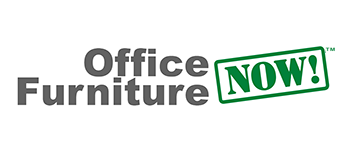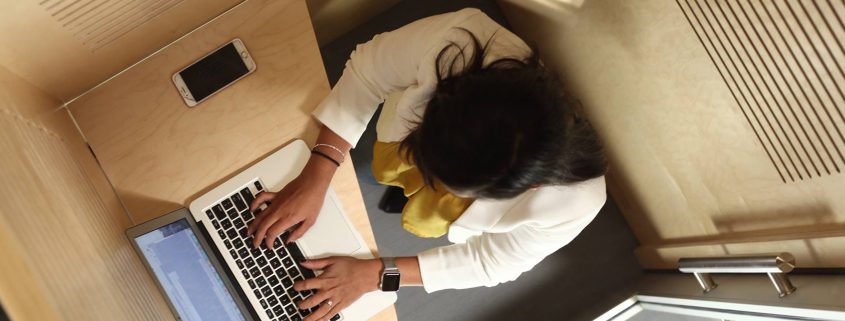Staying Sane And Healthy At Work
Office privacy has become the next big adventure in office design. Over the past 30 years, the open office concept has shoved its way past more traditional designs to become the most popular office setting in America. Almost seven out of every ten offices now use this concept in one fashion or another.
It works like this: All, or nearly all, of employee work is done in a single room. Some offices allow cubicles to create the illusion – but not the reality – of privacy. Others simply fill a space with desks. Partly because the concept was embraced by new and “cool” tech firms, the original reports of the design’s effectiveness were overwhelmingly positive.
Unfortunately for workers and owners alike, this experiment turned out to be a failure. Study after study revealed that most people disliked the open office. Many even suffered mental and physical effects from the inability to escape constant distractions and noise.
Where the Open Office Plan Came From and Why It Was Used
While police departments and news media offices have used what was once called a “bullpen” design for well over a century, most American businesses preferred to allow at least senior staff office privacy. Then in the 1950s, German businesses pioneered the idea of a completely open office.
Originally, they believed that an open office would enhance cooperation between staff. Without walls to serve as communication barriers, they reasoned, collaboration would increase, producing more great ideas and enhancing productivity. By the 1970s, some American offices had adopted the concept. At the turn of the century, the open office had grown into both the trendy and dominant design for US workplaces.
When Audio and Visual Distractions Become a Problem
The open office concept, even those that use cubicles to create a false illusion of privacy, creates innumerable distractions that produce negative effects on up to two-thirds of people who work in them.
Visual distractions can occur in any office format, but in open concepts where the individual has no control over his or her field of vision, they can kill hours or even a whole day of productivity. Any movement can draw the eyes away from a file or a computer screen and disrupt concentration. Some studies suggest that once interrupted, it can take workers twenty minutes or more to get back on track.
Sound based distractions are even worse. Open office designs subject everyone to the annoyance of side conversations. Even more problematic, the continual noise of ringing phones, computers, and other common work devices creates dangerous levels of stress and anxiety.
Effects of Distractions and Noise On Mental and Physical Health
The open office concept does not simply turn a workspace into a realm dominated by distraction. It also can affect mental and physical health.
According to a study published in Ergonomics, companies that use the open office concept experience a spike in sick or personal days. Those who have examined the issue in more detail have broken the absenteeism down to a few specific problems.
First, putting a large number of people into the same space increases the chance that a communicable disease, such as the flu, will spread faster. Worse, however, many people experience negative physical impacts from constant office noise. The added stress can increase irritability and even cause anxiety, which weaken the immune system.
Other researchers have emphasized the issues faced by people who have a more introverted personality. Introverts often include people with genius ability, but a strong desire to work in isolation.
The open office concept serves as a nightmare for introverts due to the fact that it opens them up to constant unwanted interactions. Introverts cannot function at their full potential without privacy. Almost two-thirds of open office workers surveyed reported that their offices cause serious productivity problems.
The Agile Office As an Evolution Toward More Privacy
Despite the fact that the open office concept has been proven to affect employee health and reduce their effectiveness, don’t expect companies to rush toward a return to traditional office spaces.
Any office redesign requires a substantial investment, whether the company is large or small. If the traditional office ever returns to predominance, it will be a slow generational switch.
Happily, open offices can adapt their space to provide the privacy that employees need. The word for the latest approach is “agile office.” This concept blends the established open office with added features that provide individuals or small groups with spaces they can use to get away from the constant drone of open office noise & distraction.
Ensuring that individuals can escape to work or communicate privately will help roll back the problems with productivity associated with the modern open office.
Rather than taking an all or nothing approach, companies with open offices should start to look for a middle ground. The CEO’s and office managers that best find a way to balance out their office settings to satisfy the majority of their staff will enjoy the benefits of increased productivity & higher employee morale.
 GUEST BLOGGER, SAMUEL JOHNSON: Sam Johnson is the Founder/CEO of Zenbooth. Zenbooth is a free-standing sound-dampening office privacy booth with a handcrafted, natural aesthetic that fits any office.
GUEST BLOGGER, SAMUEL JOHNSON: Sam Johnson is the Founder/CEO of Zenbooth. Zenbooth is a free-standing sound-dampening office privacy booth with a handcrafted, natural aesthetic that fits any office.



